Shadi Shahsavari
Which side are you on? Insider-Outsider classification in conspiracy-theoretic social media
Mar 30, 2022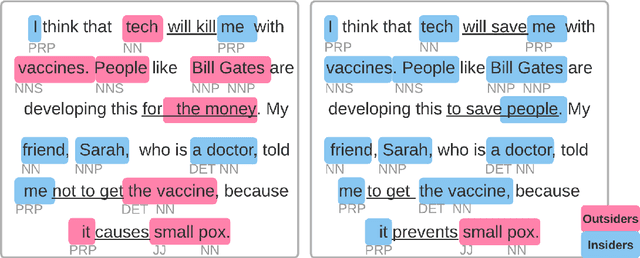
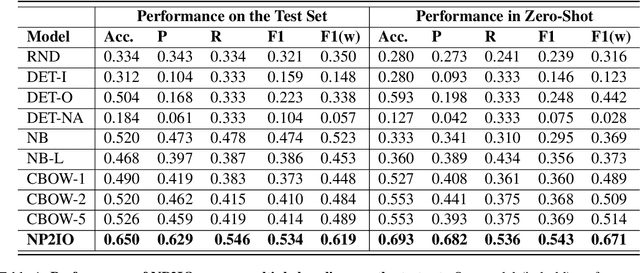
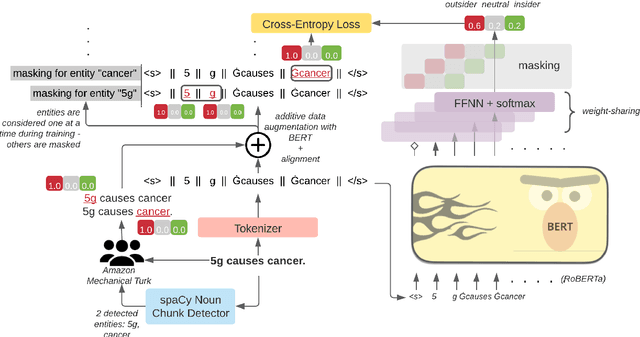
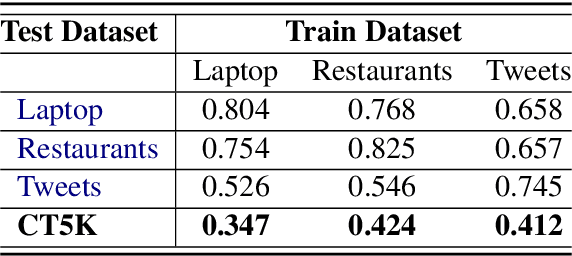
Abstract:Social media is a breeding ground for threat narratives and related conspiracy theories. In these, an outside group threatens the integrity of an inside group, leading to the emergence of sharply defined group identities: Insiders -- agents with whom the authors identify and Outsiders -- agents who threaten the insiders. Inferring the members of these groups constitutes a challenging new NLP task: (i) Information is distributed over many poorly-constructed posts; (ii) Threats and threat agents are highly contextual, with the same post potentially having multiple agents assigned to membership in either group; (iii) An agent's identity is often implicit and transitive; and (iv) Phrases used to imply Outsider status often do not follow common negative sentiment patterns. To address these challenges, we define a novel Insider-Outsider classification task. Because we are not aware of any appropriate existing datasets or attendant models, we introduce a labeled dataset (CT5K) and design a model (NP2IO) to address this task. NP2IO leverages pretrained language modeling to classify Insiders and Outsiders. NP2IO is shown to be robust, generalizing to noun phrases not seen during training, and exceeding the performance of non-trivial baseline models by $20\%$.
Modeling Social Readers: Novel Tools for Addressing Reception from Online Book Reviews
May 07, 2021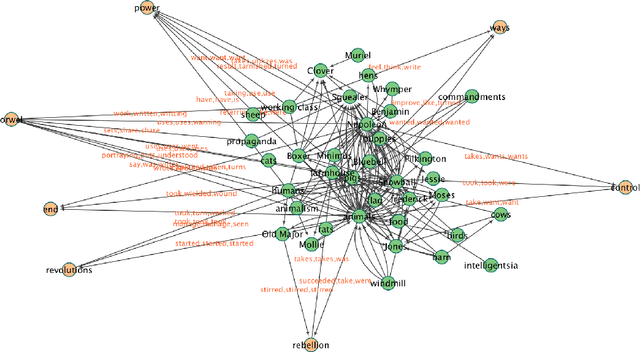

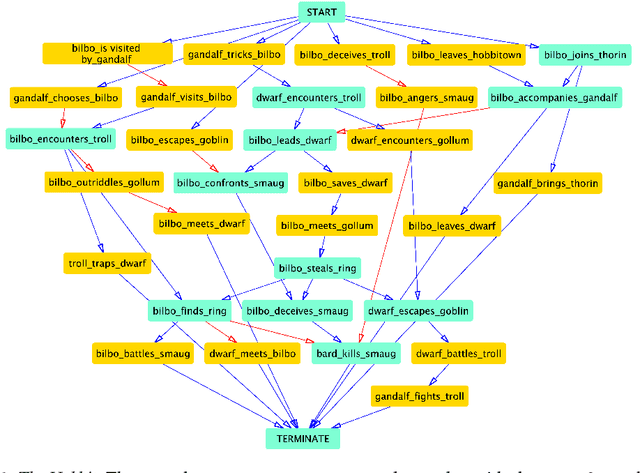
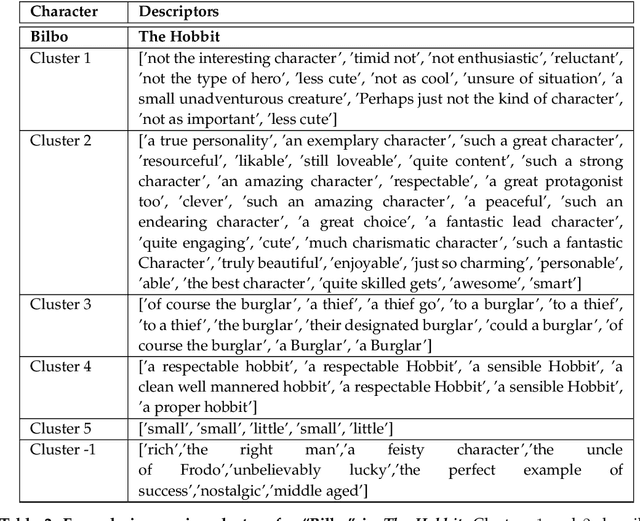
Abstract:Readers' responses to literature have received scant attention in computational literary studies. The rise of social media offers an opportunity to capture a segment of these responses while data-driven analysis of these responses can provide new critical insight into how people "read". Posts discussing an individual book on Goodreads, a social media platform that hosts user discussions of popular literature, are referred to as "reviews", and consist of plot summaries, opinions, quotes, or some mixture of these. Since these reviews are written by readers, computationally modeling them allows one to discover the overall non-professional discussion space about a work, including an aggregated summary of the work's plot, an implicit ranking of the importance of events, and the readers' impressions of main characters. We develop a pipeline of interlocking computational tools to extract a representation of this reader generated shared narrative model. Using a corpus of reviews of five popular novels, we discover the readers' distillation of the main storylines in a novel, their understanding of the relative importance of characters, as well as the readers' varying impressions of these characters. In so doing, we make three important contributions to the study of infinite vocabulary networks: (i) an automatically derived narrative network that includes meta-actants; (ii) a new sequencing algorithm, REV2SEQ, that generates a consensus sequence of events based on partial trajectories aggregated from the reviews; and (iii) a new "impressions" algorithm, SENT2IMP, that provides finer, non-trivial and multi-modal insight into readers' opinions of characters.
An automated pipeline for the discovery of conspiracy and conspiracy theory narrative frameworks: Bridgegate, Pizzagate and storytelling on the web
Aug 23, 2020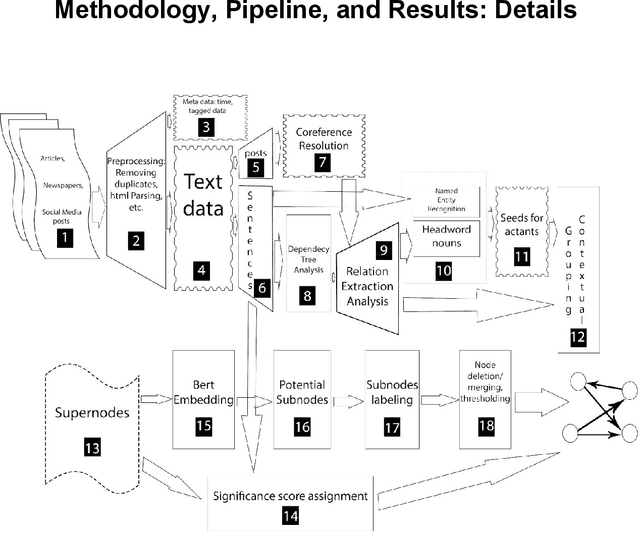
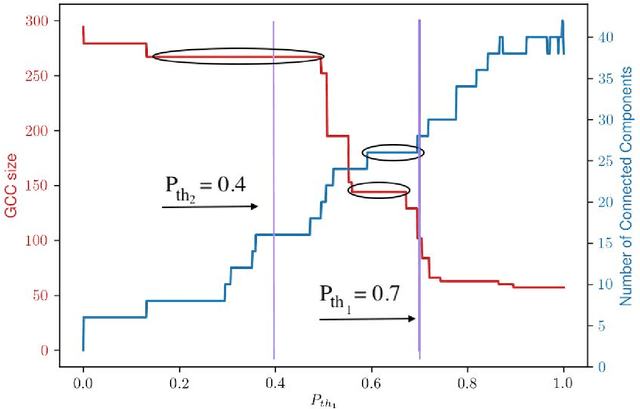
Abstract:Although a great deal of attention has been paid to how conspiracy theories circulate on social media and their factual counterpart conspiracies, there has been little computational work done on describing their narrative structures. We present an automated pipeline for the discovery and description of the generative narrative frameworks of conspiracy theories on social media, and actual conspiracies reported in the news media. We base this work on two separate repositories of posts and news articles describing the well-known conspiracy theory Pizzagate from 2016, and the New Jersey conspiracy Bridgegate from 2013. We formulate a graphical generative machine learning model where nodes represent actors/actants, and multi-edges and self-loops among nodes capture context-specific relationships. Posts and news items are viewed as samples of subgraphs of the hidden narrative network. The problem of reconstructing the underlying structure is posed as a latent model estimation problem. We automatically extract and aggregate the actants and their relationships from the posts and articles. We capture context specific actants and interactant relationships by developing a system of supernodes and subnodes. We use these to construct a network, which constitutes the underlying narrative framework. We show how the Pizzagate framework relies on the conspiracy theorists' interpretation of "hidden knowledge" to link otherwise unlinked domains of human interaction, and hypothesize that this multi-domain focus is an important feature of conspiracy theories. While Pizzagate relies on the alignment of multiple domains, Bridgegate remains firmly rooted in the single domain of New Jersey politics. We hypothesize that the narrative framework of a conspiracy theory might stabilize quickly in contrast to the narrative framework of an actual one, which may develop more slowly as revelations come to light.
Conspiracy in the Time of Corona: Automatic detection of Covid-19 Conspiracy Theories in Social Media and the News
Apr 28, 2020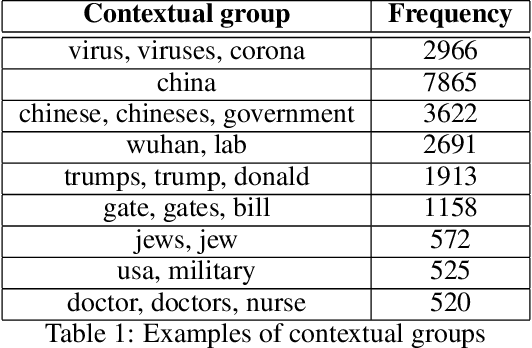
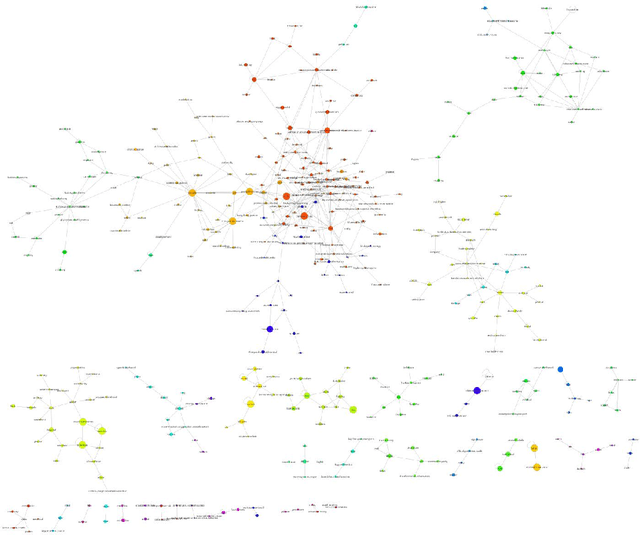
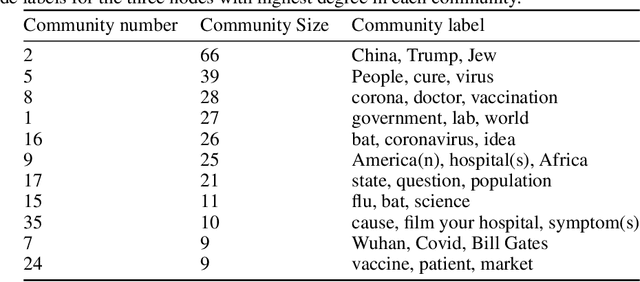
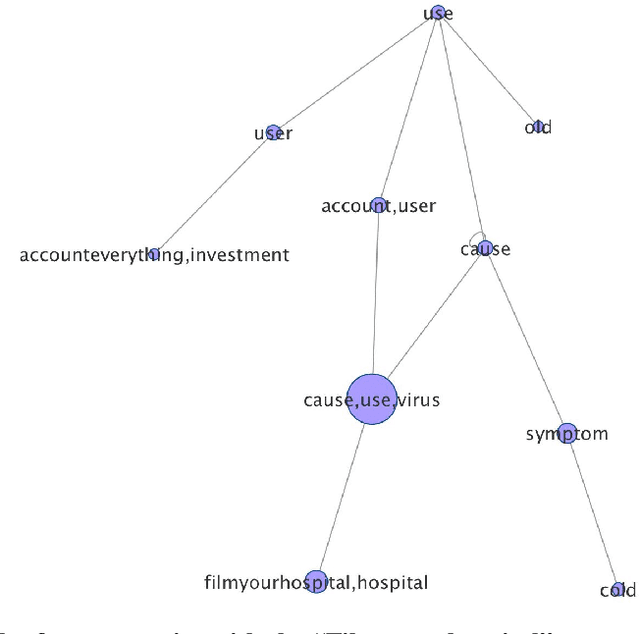
Abstract:Rumors and conspiracy theories thrive in environments of low confidence and low trust. Consequently, it is not surprising that ones related to the Covid-19 pandemic are proliferating given the lack of any authoritative scientific consensus on the virus, its spread and containment, or on the long term social and economic ramifications of the pandemic. Among the stories currently circulating are ones suggesting that the 5G network activates the virus, that the pandemic is a hoax perpetrated by a global cabal, that the virus is a bio-weapon released deliberately by the Chinese, or that Bill Gates is using it as cover to launch a global surveillance regime. While some may be quick to dismiss these stories as having little impact on real-world behavior, recent events including the destruction of property, racially fueled attacks against Asian Americans, and demonstrations espousing resistance to public health orders countermand such conclusions. Inspired by narrative theory, we crawl social media sites and news reports and, through the application of automated machine-learning methods, discover the underlying narrative frameworks supporting the generation of these stories. We show how the various narrative frameworks fueling rumors and conspiracy theories rely on the alignment of otherwise disparate domains of knowledge, and consider how they attach to the broader reporting on the pandemic. These alignments and attachments, which can be monitored in near real-time, may be useful for identifying areas in the news that are particularly vulnerable to reinterpretation by conspiracy theorists. Understanding the dynamics of storytelling on social media and the narrative frameworks that provide the generative basis for these stories may also be helpful for devising methods to disrupt their spread.
An Automated Pipeline for Character and Relationship Extraction from Readers' Literary Book Reviews on Goodreads.com
Apr 20, 2020

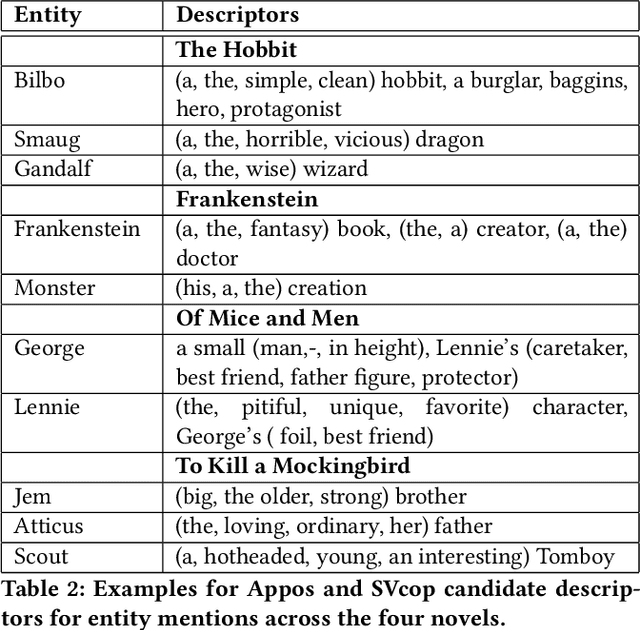
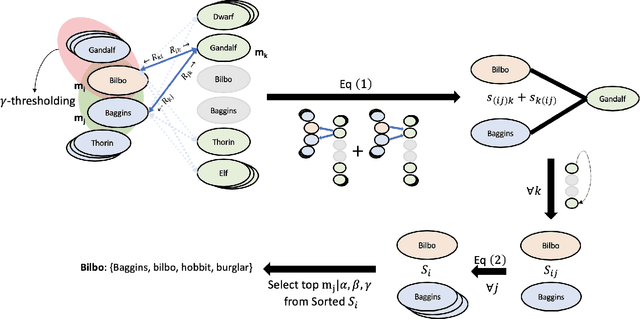
Abstract:Reader reviews of literary fiction on social media, especially those in persistent, dedicated forums, create and are in turn driven by underlying narrative frameworks. In their comments about a novel, readers generally include only a subset of characters and their relationships, thus offering a limited perspective on that work. Yet in aggregate, these reviews capture an underlying narrative framework comprised of different actants (people, places, things), their roles, and interactions that we label the "consensus narrative framework". We represent this framework in the form of an actant-relationship story graph. Extracting this graph is a challenging computational problem, which we pose as a latent graphical model estimation problem. Posts and reviews are viewed as samples of sub graphs/networks of the hidden narrative framework. Inspired by the qualitative narrative theory of Greimas, we formulate a graphical generative Machine Learning (ML) model where nodes represent actants, and multi-edges and self-loops among nodes capture context-specific relationships. We develop a pipeline of interlocking automated methods to extract key actants and their relationships, and apply it to thousands of reviews and comments posted on Goodreads.com. We manually derive the ground truth narrative framework from SparkNotes, and then use word embedding tools to compare relationships in ground truth networks with our extracted networks. We find that our automated methodology generates highly accurate consensus narrative frameworks: for our four target novels, with approximately 2900 reviews per novel, we report average coverage/recall of important relationships of > 80% and an average edge detection rate of >89\%. These extracted narrative frameworks can generate insight into how people (or classes of people) read and how they recount what they have read to others.
 Add to Chrome
Add to Chrome Add to Firefox
Add to Firefox Add to Edge
Add to Edge